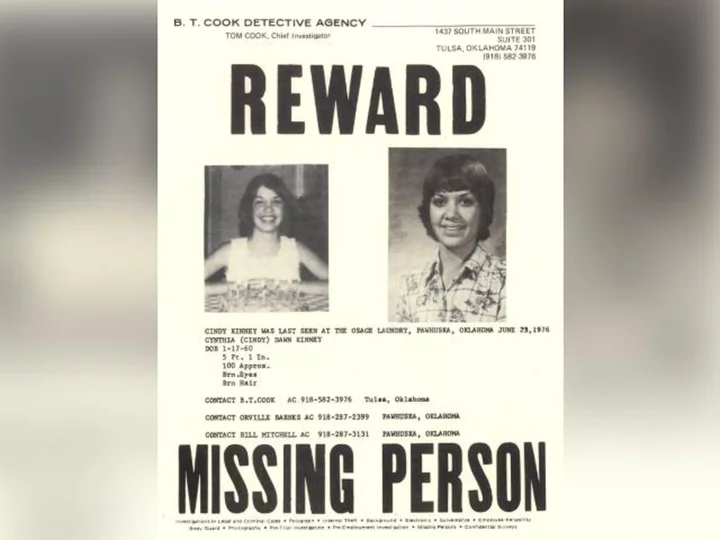Editor's note: This article contains graphic descriptions of violence that some readers may find disturbing.
Decades-old personal writings from Dennis Rader, the self-proclaimed BTK serial killer, have led local Oklahoma law enforcement to believe he is the "prime suspect" in a missing persons case from 1976.
Rader has been linked to the missing persons case of 16-year-old Cynthia Dawn Kinney, who was last seen at a local laundromat in June of that year in Pawhuska, Oklahoma, about two hours from where Rader lived and owned land in Kansas, according to Osage County Undersheriff Gary Upton.
The prolific killer, who pleaded guilty in 2005 to 10 murders committed in the Wichita area from 1974 to 1991, is serving 10 life sentences in prison.
Since January, Osage County Sheriff's Office investigators have poured over Rader's written works, which were first found when he was arrested in 2005, looking for links to local unsolved crimes, according to Upton.
Investigators recently obtained the materials from Wichita police, including recovered journals and an unpublished book manuscript, to review for their cold case and unsolved crimes investigations.
Rader, who is known to have labeled his criminal endeavors as projects, referenced a project titled "Bad Wash Day" in a 1976 journal entry recently made public by the sheriff's office.
"Laundry Mat were a good place to watch victims and dream," Rader wrote in the entry. "The Brunette was the target."
In the journal entry, Rader also connects the "Bad Wash Day" project to a chapter in his unpublished manuscript, which is understood to be a description of all projects, or murders, the killer viewed as "successful," Upton told CNN.
Rader also handwrote "out of town until things cool down" on the same journal page.
Investigators believe the killer was likely away from his home in Park City, Kansas, during the time frame in 1976, Upton said.
Authorities search BTK serial killer's former property
BTK writings and other investigative tips led police to search Rader's former residence primarily in connection with a probe into Cynthia's disappearance.
Authorities also are checking whether Rader is connected to "other missing persons cases and unsolved murders in the Kansas and Missouri areas," the Osage County Sheriff's Office in Oklahoma said in a news release Wednesday.
An attorney for Rader, Rob Ridenour, told CNN Wednesday he had no comment.
During their search of the property, investigators uncovered "trophies" from at least one woman in a "hiding hole," according to Upton.
Investigators also found chains apparently used for bondage, along with C-clips that can shorten chains or be used to secure a person's legs or feet, Upton said. They also found items they don't currently want to describe publicly, he added.
Authorities have previously said Rader took and kept victims' personal effects, including jewelry and clothing. Details about whether investigators believe they know the identity or identities of whoever owned the items found weren't immediately available.
In April, authorities also unearthed what they described as a pantyhose ligature.
Rader, now 78, is incarcerated at the El Dorado Correctional Facility in Kansas.
When he admitted to the killings, the dedicated churchgoer and married father of two described in court how he chose and stalked his victims before killing them. In more than one case, the killer said he took Polaroid photos of his victims.
As Rader went uncaught for decades, he mailed cryptic letters to the media and investigators -- a practice that ultimately lead to his capture. Rader was arrested in 2005 after police traced a floppy disk he mailed to a local TV station to a computer at his church. Investigators then determined that Rader's DNA matched the killer's.
Rader's daughter, Kerri Rawson, has been offering "volunteer assistance" to investigators in the Kinney case and a probe into an unsolved killing in Missouri and was aware of the search on her former childhood home.
"I will continue to partner closely and heartily support all (law enforcement) agencies and offer my volunteer assistance," Rawson said. "Let's keep working together to solve these cases for these families. They deserve all that we can give them. We can join together to put our mark on modern inter-agency cooperation and modern forensics."

